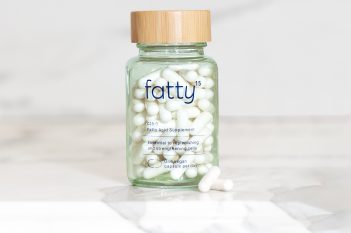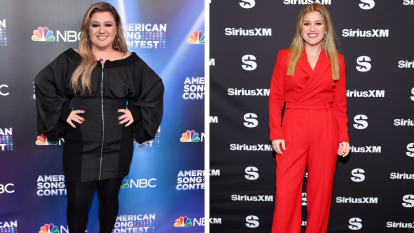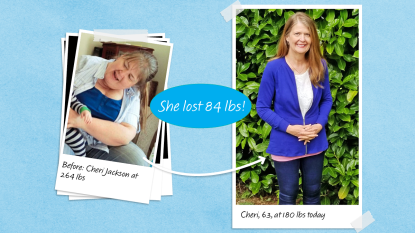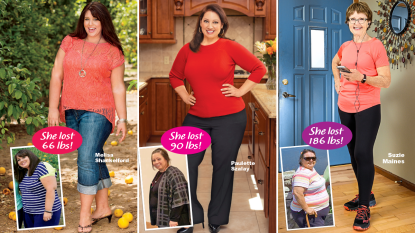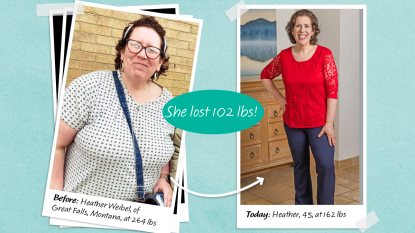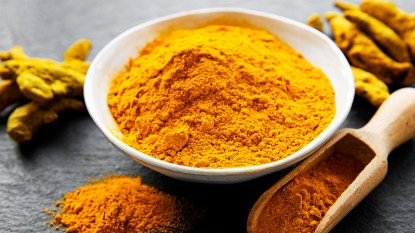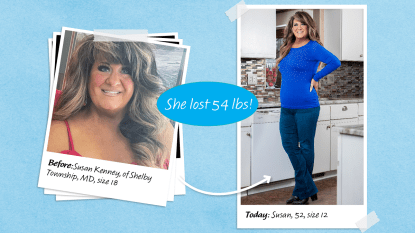6 Ways to Eat Your Way to a Slimmer Waist
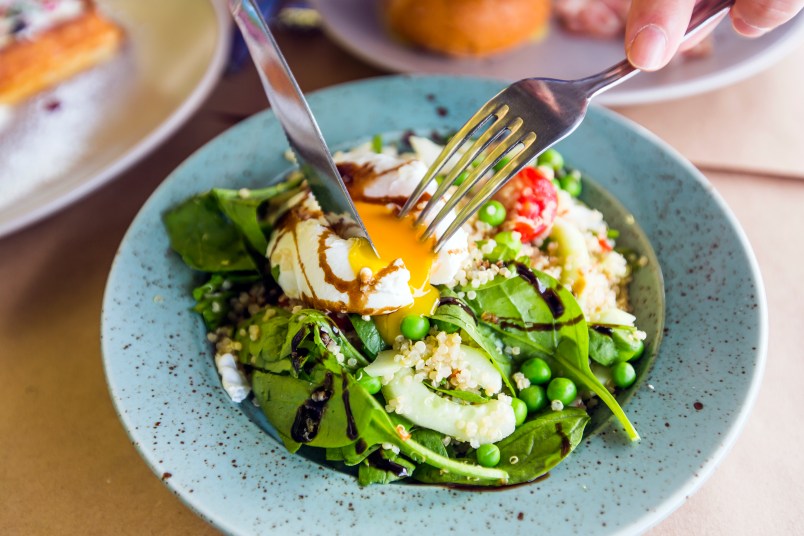
Aside from being able to get back into that skirt you love, losing fat from around your middle could make a huge difference to your health. Carrying excess fat on your tummy, known as visceral fat, increases your risk of health problems such as heart disease, Type 2 diabetes, stroke, and dementia. A waist measurement of more than 31.5 inches for women and 37 inches for men means your risk of all of these diseases is higher than that of someone with a slimmer waist — regardless of the number on the scales. Losing a few inches won’t just help you to look better — it will actually make you healthier, too.
You don’t need to spend hours of your day counting calories and weighing your food to lose that stubborn tummy. You just need to make a few tweaks to your plate at every meal to make sure you’re getting the right balance of nutrients, vitamins, and minerals to keep your body in great working order.
Taking a few moments to get your portions right won’t just help you to lose weight, it could improve your energy levels, help you sleep better, and boost your immune system too.
Your ‘Handy’ Portion Guide
We all know plenty of lean protein, healthy fats, wholegrain carbohydrates, and lots of fruit and vegetables makes for a healthy diet — but where many of us fall down is portion size. Eating too much — even healthy foods — can still lead to weight gain. But getting your portions right doesn’t take long and there’s no need to weigh anything or count up the calories — you just need to check your plate before every meal.
“Your ideal plate should be made up of a palm-sized piece of protein such as lean meat, fish, eggs, or dairy products, one handful of complex carbohydrates such as brown rice, brown pasta, sweet potatoes, beans and pulses, and a generous portion of non-starchy veg such as broccoli, spinach, mushrooms, kale or peppers,” says nutritionist Jenna Hope. “Also include one to two teaspoons of healthy fats such as the oil olive you cook your food in, or a small sprinkling of nuts and seeds.”
Protein: The Size of Your Palm
“Protein helps you build muscle and stay strong. It’s important for energy production and helps your body repair itself,” says Jenna. Find it in meat and fish, eggs, and dairy products and in beans, legumes, pulses, and some wholegrains.
Fruit and Veg: The Size of Your Hand
Fruit and veg are rich in fibre and high in vitamins and minerals to keep your body healthy and your bowels regular. “The fibre also improves your gut health which can help you to maintain a healthy weight, boost your mood and even help you sleep better,” says Jenna.
Complex Carbohydrates: One Fistful
“These are high in B-vitamins to keep your energy levels up,” says Jenna. “They’re released into the bloodstream at a slower rate than simple carbohydrates such as white pasta, white rice, and sugar, so they keep you fuller for longer.”
Fat: 1 to 2 Fingertips
“Don’t skimp on fat, it’s essential for the absorption of some nutrients such as Vitamins A, D, E and K,” says Jenna. “It’s also important for energy and makes up the structure of many cells in your body.” Choose healthy fats such as those found in almonds, avocados, oily fish, and olive oil.
What about my favorites?
You can apply the same rules when you’re cooking family favorites such as spaghetti bolognese or beef stew. “Visualize your ingredients on a plate,” says Jenna. “For a bolognese, your meat should take up a quarter of the plate, the spaghetti another quarter, and the vegetables the remaining half. The portions may be bigger if you’re cooking for more than one person, but the same ratios apply.” Alternatively, when you’re adding the ingredients, estimate the portions per person.
For example, imagine one palm-sized piece of beef per person, one handful of pasta per person, and then two to three handfuls of vegetables.
Be sensible about snacks.
Are you actually hungry? Most of us snack out of habit rather than hunger and if you’re eating three balanced meals a day you might not actually need to snack. “Before you snack, stop and listen to your body to assess whether your stomach is actually empty or whether you’re just low in energy or you’re bored,” says Jenna. “If you are truly hungry, choose a snack that is a mixture of complex carbohydrate, healthy fats, and protein such as rice crackers with peanut butter, Greek yogurt and berries, olives, a handful of nuts, or some hummus and vegetable sticks.”
Remember, you only need to eat enough to take the edge off your hunger — it’s not another meal!
Your Perfect Day
To make it easy for you, we’ve broken down the main food groups into portions that will help make a difference to your waist — and your health.
- Three portions of protein — lean meat and poultry (only one portion of red or processed meat a week), fish (four portions a week, two of which should be oily), eggs, tofu, legumes, nuts and seeds
- Four to five portions of complex carbohydrates — wholegrains and starchy vegetables such as potatoes and sweet potatoes
- Five portions of fruit and vegetables (at least) — ideally three portions of vegetables and two portions of fruit
- Two portions of dairy or a fortified alternative — milk, natural or Greek yogurt, cheese
- Three portions of healthy fats — such as olive oil, avocado, butter, peanut butter, or almond butter
- Six to eight glasses of water — herbal tea counts, but not coffee, caffeinated tea, fizzy drinks, juices, and smoothies
This article originally appeared on our sister site, Yours.
More From FIRST
The DASH Diet Speeds Weight Loss and Lowers Blood Pressure — If You Do It Right
The Best Keto Meal Plans to Keep Your Diet Delicious and Doable


